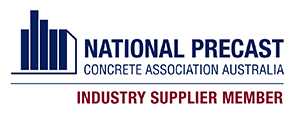Technological innovations have touched every industry over the last decade, and not even the ancient construction methodologies have sidestepped the disruption. The phrase “3D-printed concrete” was something most contractors never thought they would hear. Is this going to be standard practice with concrete maturity testing verifying strengths?
What Is 3D-Printed Concrete?
3D-printed concrete is, literally, concrete ‘ink’ put down in a thin layer upon a thin layer based on an uploaded design. Multiple companies have “printed” prototypes, and they have thus far proved to be successful.
There are already a variety of concrete 3D printers, from heavyweight to lightweight. Initial 30-day printing plans have been sped up to one day in some instances. The lighter weight printers are obviously more attractive from a logistics and site planning perspective.
This methodology could prove to be transformative for post-natural disaster projects or low-cost housing. The reduction in labour requirements also reduces injuries on-site and costs and speeds up project turnaround times.
Benefits Of 3D-Printed Concrete And Wireless Concrete Maturity Testing
A Dutch construction firm has utilised this cutting edge technology to construct a 170 sqm research laboratory in twenty-one days. In Boston, USA company has published demonstrations of homes printed in one day. When building any concrete structure, it is very important to know the strength of the structure to ensure compliance with the specified designs. Concrete maturity is an alternative test method to traditional concrete test cylinders and is used to verify the in-situ strength of concrete poured or printed on-site, especially when time is of the essence. The benefits of using concrete maturity can be significant as it allows contractors to save significantly on time and costs and increase revenue by being available to start new projects sooner. ConXedge uses the latest technology, allowing contractors to remotely monitor strength using low-cost wireless sensors and track strength development in real-time.
Appropriate Methodology For Low-Cost Housing
Residential project costs have soared internationally, and the demand continues to grow. Population pressures in the entry-level residential market have driven up the need for low-cost housing globally. Fast, low-skill and cost-effective methodologies will bring huge benefits to this sector.
Concrete brings health and safety, durability and flexibility of design and use benefits. With 3D printing potentially adding speed, cost-savings, lower risks and greater virtual management to projects, it bodes well for the future.
We are certainly looking forward to the continued refinement and diversification of this new technology and the benefits it can deliver for construction projects on Earth or other planets. For concrete construction and concrete maturity testing professionals, it’s an exciting sector to watch.
Get the most efficient and effective concrete maturity testing solutions for your projects by contacting us today.


